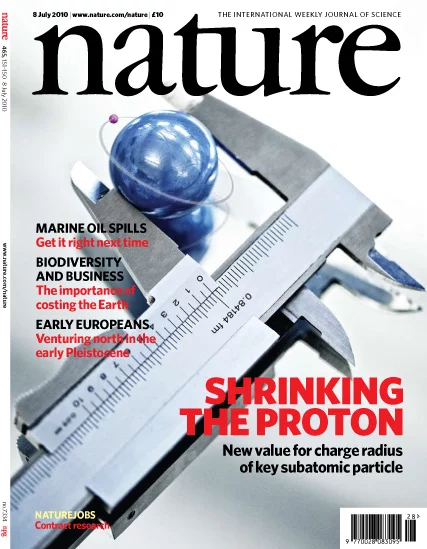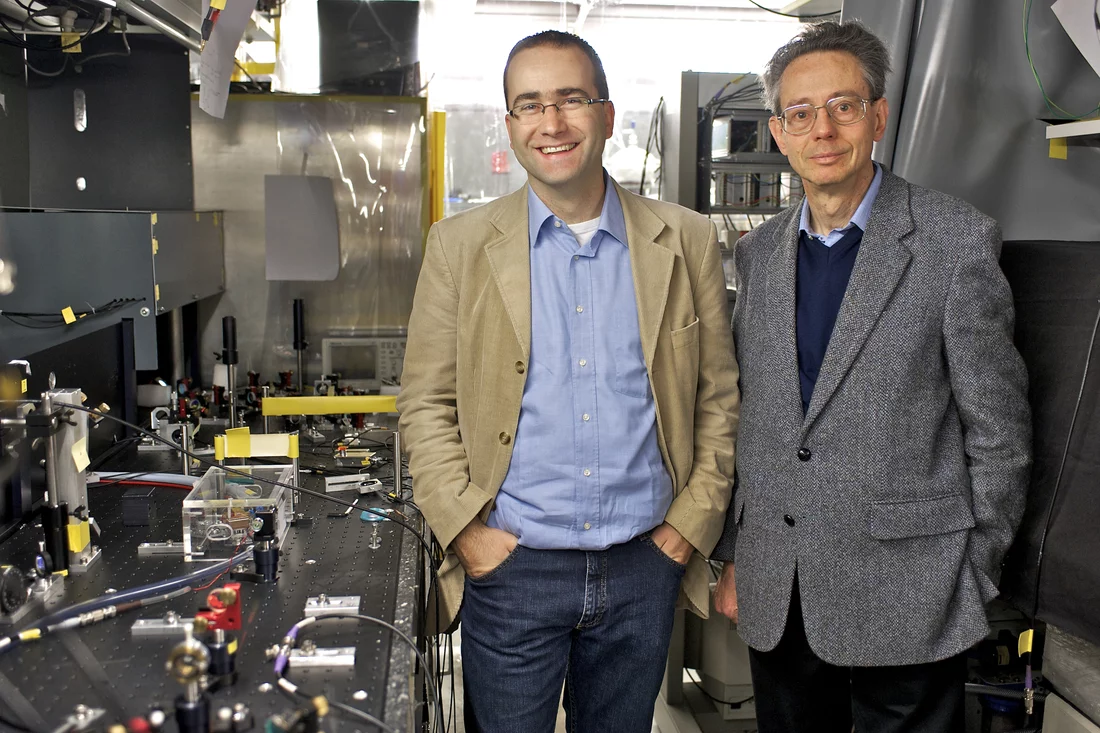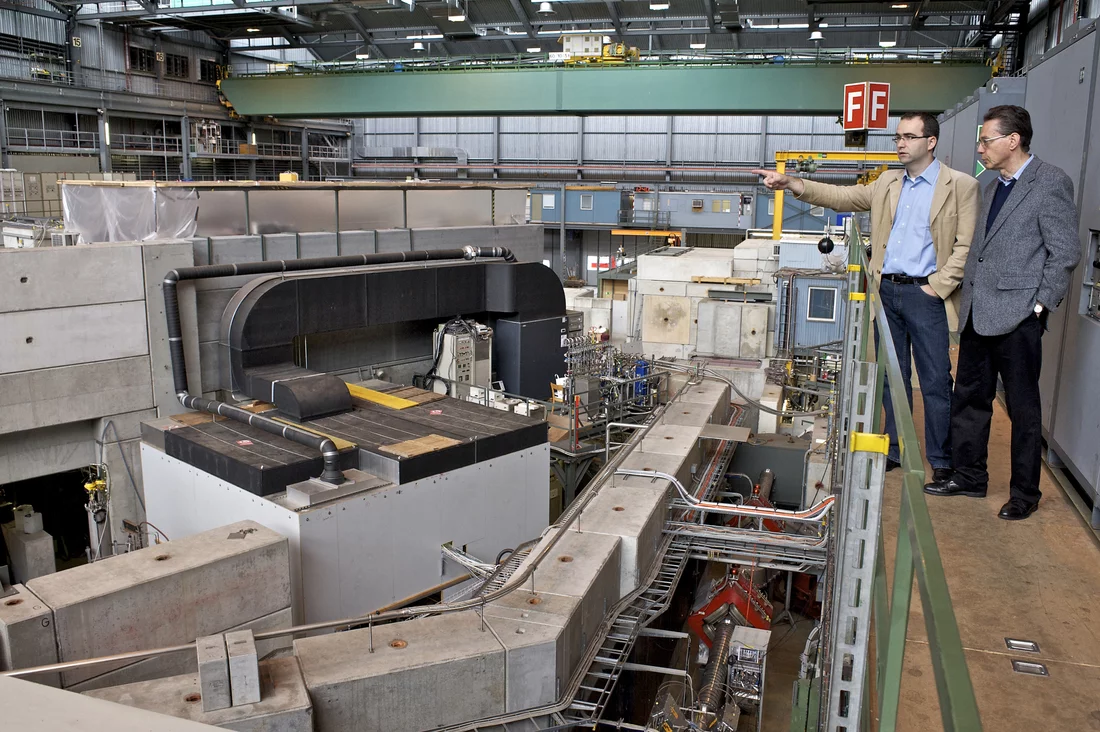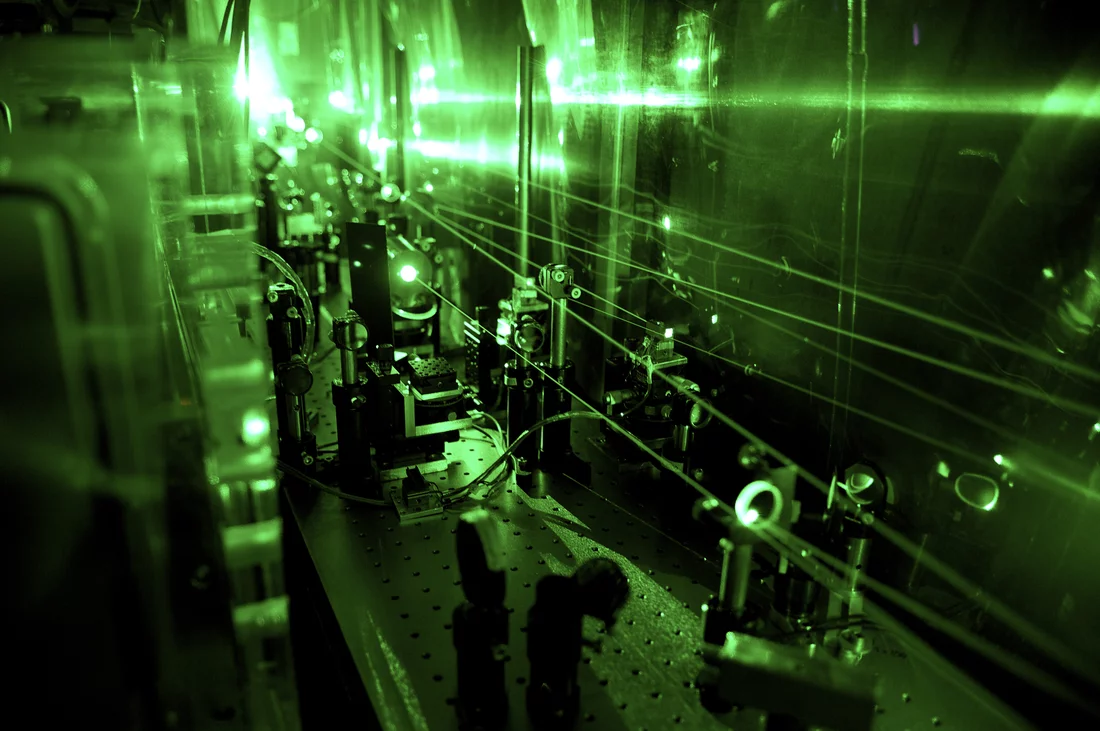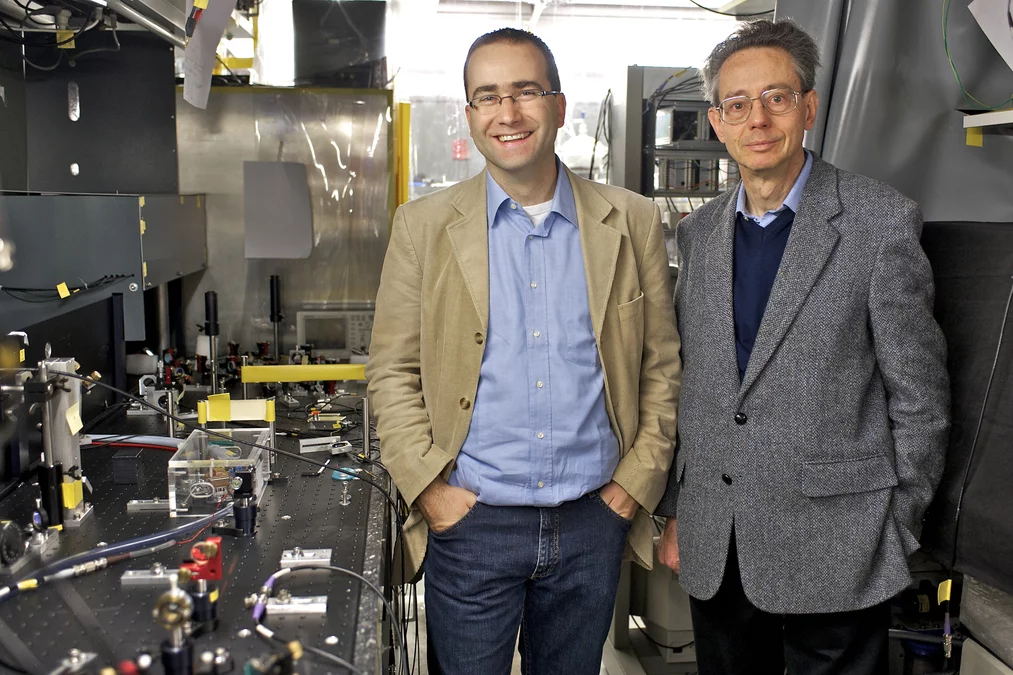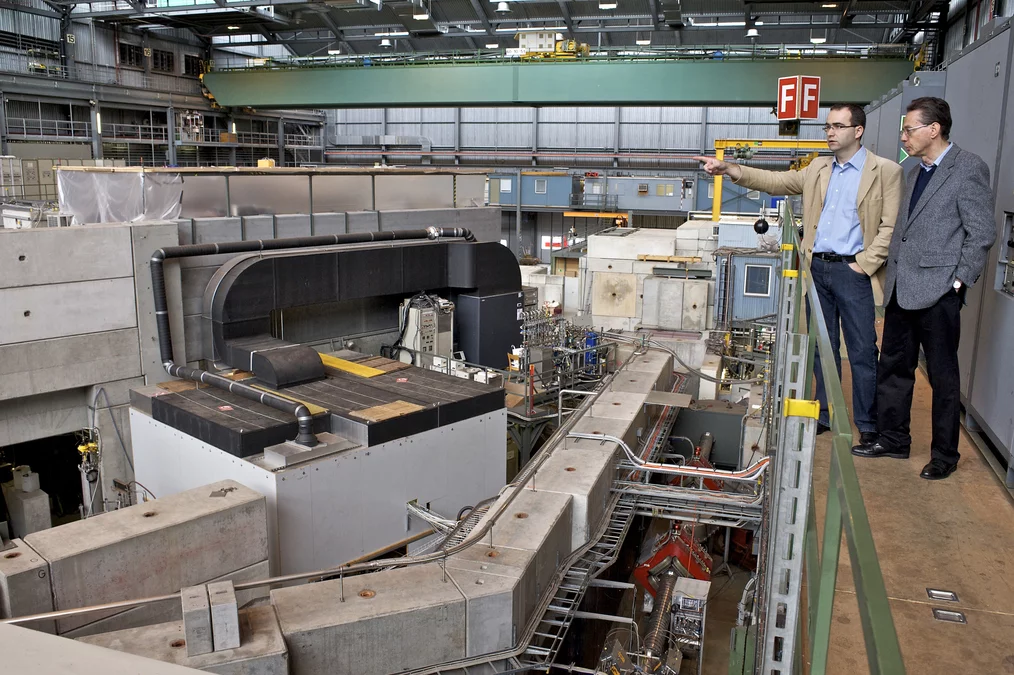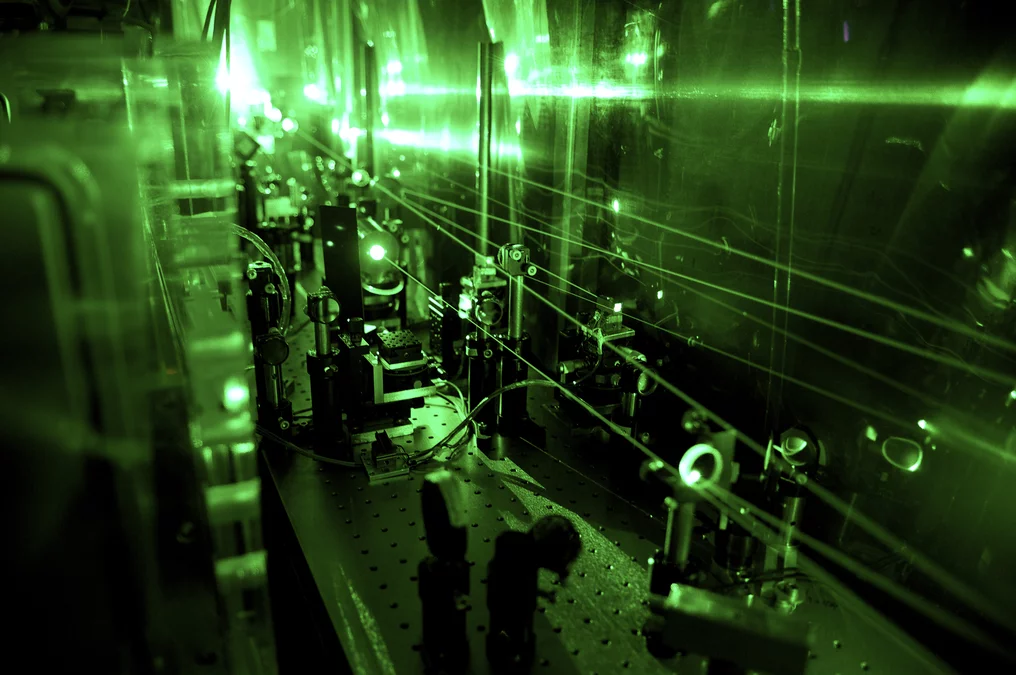The proton - one of the smallest building-blocks of all matter - is even smaller than had previously been assumed. This discovery is the result of experiments carried out at the Paul Scherrer Institute (PSI) in Villigen, Switzerland, by an international research team. As a consequence of this discovery, a correction will have to be made to either the quantum theory of how light and matter interact or to the value of the Rydberg Constant - i.e. an important change is needed to either the most precise theory in physics or the most precisely determined physical constant. The question of which correction will be necessary now presents an enormous challenge to physicists.
In order to carry out their experiment, the research team exploited the phenomenon of exotic hydrogen atoms - atoms with one proton and a negatively charged muon orbiting around it, instead of the electron which is normally present there. The path that the muon travels around the proton has a radius 200 times smaller than that followed by the electron in a hydrogen atom, and consequently the characteristics of the muon path are more closely dependent on the dimensions of the proton. A specially developed laser allowed the team to measure features of the muon path which allowed them to determine the radius of the proton. These experiments could be undertaken only at PSI, since it is the sole location in the world at which a muon beam of sufficient intensity can be generated. The researchers report upon their results in the latest edition of the science magazine 'Nature'.
Protons are among the basic building blocks of matter - in conjunction with neutrons they form the nuclei of the atoms. Normally, nuclei are surrounded by orbiting electrons and the electrons and nuclei form the atoms of the various chemical elements. Practically everything that surrounds us is made up of these three types of particle. The hydrogen atom is the simplest of all atoms, with a nucleus consisting of a single proton which is paired up with a single electron, forming one of the simplest systems describable in quantum physics. Historically, hydrogen has therefore often been used as the best system for investigating basic questions in physics. Theodor Hänsch, Nobel laureate and one of the scientists involved in the project, calls it the Rosetta Stone of Quantum Physics
.
In order to determine the proton radius, the researchers replaced the single electron in individual hydrogen atoms with a negatively charged muon. At 200 times the mass of the electron, the muon must, according to the laws of quantum physics, travel along a path that is significantly closer to the proton than that of an electron. In turn, this means that the characteristics of the muon path are much more sensitive to the dimensions of the proton. The proton radius can therefore be determined significantly more accurately by measuring the characteristics of the muon path than those of the electron path. The characteristics of the muon path were determined using a specially developed infra-red laser whose energy (i.e. the colour of the laser light) could be adjusted in extremely small steps, and whose reaction time to generate light once the muon arrives was very fast. Muons decay within 2 millionths of a second, which means that measurements on muon atoms have to be carried out within the same time frame, as they, too, disappear when the muon decays.
Unexpected discrepancy
We were actually aiming to measure the recognised value of the proton radius more accurately, in order that Quantum Electrodynamics (the quantum theory of how light and matter interact) could be checked more closely. We had no idea that we would find a discrepancy between the recognised values and our measurements
, explains Franz Kottmann, a researcher who has been part of the project from the very beginning. However, the result differed significantly from the currently accepted value for the proton radius: 0.84184 femtometre (1 femtometre = 0.000 000 000 000 001 metre) instead of 0.8768 femtometre - a difference that is far too large to be explained by measurement inaccuracies. Either the most precise theory in physics or the most accurately determined physical constant - the Rydberg Constant - is wrong
, explains physicist Aldo Antognini, and adds: Others will have to establish where the error lies, but our next experiment, in which we will be using helium rather than hydrogen, should provide some important pointers to the right direction
.
The researchers carried out their measurements at the PSI accelerator facility. It would not have been possible to do this experiment anywhere else, because this is the only muon beam with enough intensity
, explains Antognini, as a particularly intense beam is needed to produce enough muon atoms for the experiment. Even so, measurements took several weeks to carry out - day and night!
All the equipment had to be developed and constructed from scratch for this experiment. This is why it took more than ten years from its beginning to its end result
, emphasises Kottmann. The idea for the experiment was put forward at PSI 30 years ago, but we didn't have the technical resources at that stage to actually carry it through
.
International research
The project is a co-operative effort between a number of establishments from various countries which contributed their expertise in fields such as accelerator physics, atomic physics, and laser and detector technology. The most significant of these are:
- Paul Scherrer Institute, PSI, Villigen, Switzerland
- Institute for Particle Physics, Swiss Federal Institute of Technology (ETH) Zurich
- Max-Planck Institute of Quantum Optics, Garching, Munich, Germany
- Laboratoire Kastler Brossel, Paris, France
- Department of Physics, Universidade de Coimbra, Coimbra, Portugal
- Institute für Strahlwerkzeuge, University of Stuttgart, Stuttgart, Germany
- Dausinger & Giesen GmbH, Stuttgart, Germany
- Department of Physics, University of Fribourg, Fribourg, Switzerland
Text: Paul Piwnicki
About PSI
The Paul Scherrer Institute develops, builds and operates large-scale, complex research facilities, and makes these facilities available to the national and international research community. The Institute's own research focuses on solid-state physics and the materials sciences, elementary particle physics, biology and medicine, as well as research involving energy and the environment. With a workforce of 1300 and an annual budget of about 260 million CHF, PSI is the largest research institution in Switzerland.
Contact
Dr. Franz Kottmann, Institute for Particle Physics, ETH Zurich, and Laboratory for Particle Physics,Paul Scherrer Institute, 5232 Villigen PSI, Switzerland
E-mail: franz.kottmann@psi.ch; Tel: +41 56 310 3502 [German, English]
Dr. Aldo Antognini, Max-Planck Institute for Quantum Optics and Laboratory for Particle Physics,
Paul Scherrer Institute, 5232 Villigen PSI, Switzerland
E-mail: aldo.antognini@psi.ch; Phone: Reachable during the period 2-27 July 2010 in Canada or the US at mobile phone number: +41 79 355 03 29. After that, at: +41 56 310 4614 or +41 44 633 30 76 [German, Italian, English]
Dr. Randolf Pohl, Max-Planck Institute for Quantum Optics,
Garching, Germany
E-mail: randolf.pohl@mpq.mpg.de; Tel: +49 89 329 05 281 [German, English]
Dr. Paul Piwnicki, Science Writer, Communications Department,
Paul Scherrer Institute, 5232 Villigen PSI, Switzerland;
E-mail: paul.piwnicki@psi.ch; Tel: +41 56 310 2940 [German, English]
Original publication
The size of the protonRandolf Pohl, Aldo Antognini, François Nez, Fernando D. Amaro, François Biraben, João M. R. Cardoso, Daniel S. Covita, Andreas Dax, Satish Dhawan, Luis M. P. Fernandes, Adolf Giesen, Thomas Graf, Theodor W. Hänsch, Paul Indelicato, Lucile Julien, Cheng-Yang Kao, Paul Knowles, José A. M. Lopes, Eric-Olivier Le Bigot, Yi-Wei Liu, Livia Ludhova, Cristina M. B. Monteiro, Françoise Mulhauser, Tobias Nebel, Paul Rabinowitz, Joaquim M. F. dos Santos, Lukas A. Schaller, Karsten Schuhmann, Catherine Schwob, David Taqqu, João F. C. A. Veloso & Franz Kottmann,
Nature, 466, 213-216 (8 July 2010);
DOI: 10.1038/nature09250

